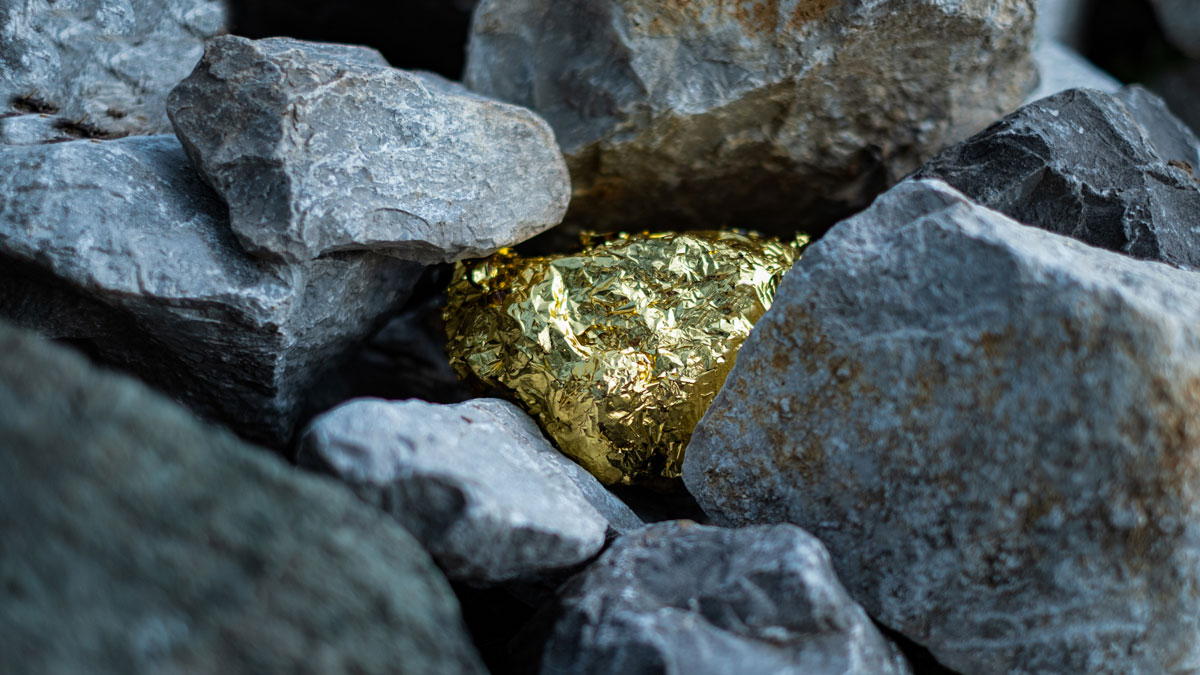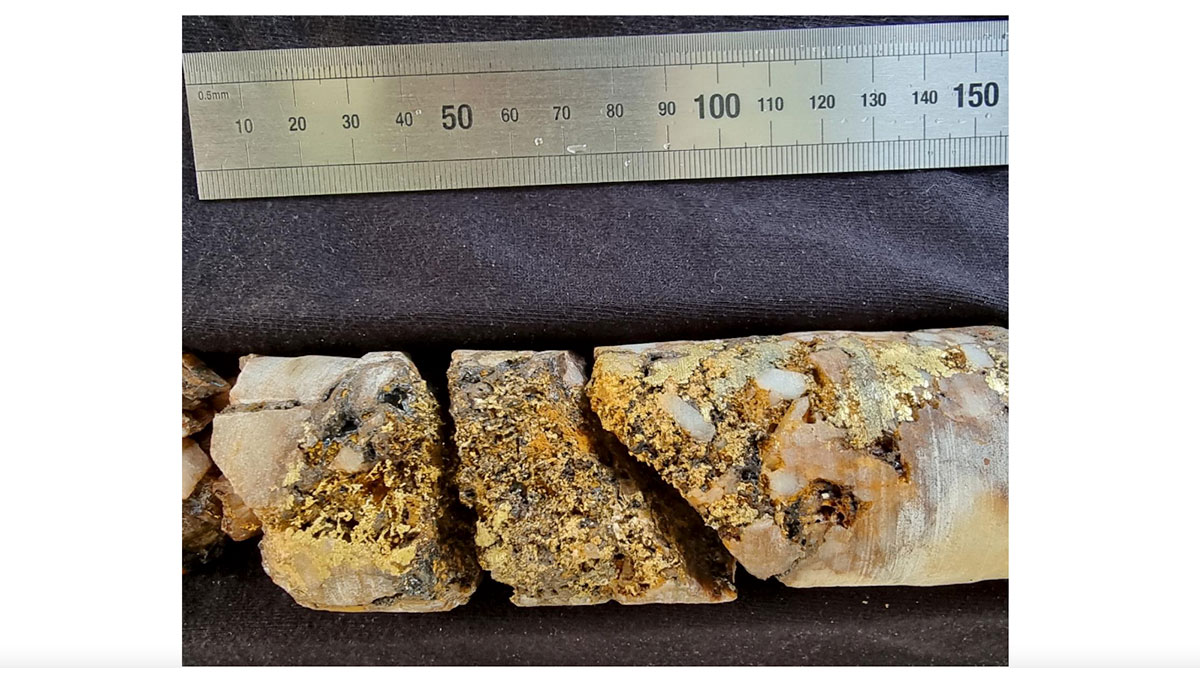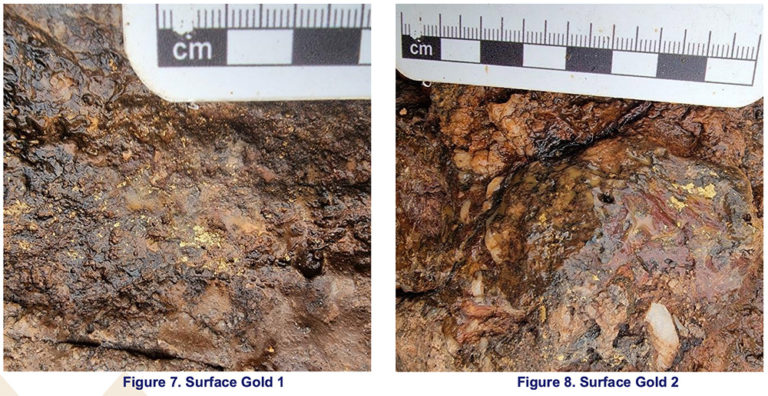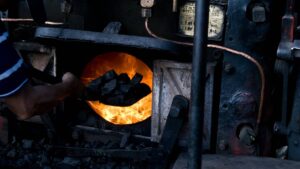Q+A: Peregrine says that spectacular 122,497g/t gold sample hints at something much bigger

Picture: Getty Images
In August last year, Creasy-backed Peregrine Gold (ASX:PGD) flew out of the blocks on news of ‘spectacular’ gold mineralisation found in shallow drill core at its Peninsula prospect, part of the Newman project, 30km west of the town of Newman in WA.
And speccy it was:

In fact, there’s gold all over the joint, they say, just sitting at surface:

Big chunks of gold like this — prevalent enough to just stumble over — demonstrated how unexplored this project area was, the company said.
In December PGD announced more ultra-high-grade gold and silver from costeaning at the nearby Birdsnest prospect.
Peregrine was featured in the below column from @StockheadAU ⬇️$PGD.ax hit 122,497g/t #gold & 26,234g/t #silver assays from sampling a quartz ironstone vein at the Birdsnest prospect during a costeans program.$PGD‘s #ASX ann ➡️ https://t.co/1J9vwDGtukhttps://t.co/MdTxEtNNZf
— Peregrine Gold (@peregrinegold) December 20, 2022
Yep, you read right. 122,497g/t — which is equivalent to 120kg of gold for every tonne of dirt moved.
And yet the results of shallow, 92-hole drilling program failed to hit the same grades. What gives?
Technical director George Merhi believes these rich, high grade gold shoots are easy to miss, and require costeaning and “precise surgical diamond drilling to resolve continuity in 3D or down plunge”.
Costeaning consists of sinking small pits down to reach the solid rock.
We spoke to George late last year about PGD’s plans to find the golden motherlode in 2023.
The recent drill program didn’t hit substantial gold. Do you have an idea of the type of mineralisation you’re dealing with at Newman?
“As much as the RC program didn’t come back with what we would’ve liked, it has been invaluable — it has helped me work out the possible architecture and structure of these gold systems,” Merhi says.
“My hunch — based on what I have seen structurally on the surface over quite a large area — is that there is a pitching chute structure which plunges to the southeast.
“That’s where I believe the gold system is going.
“The model I have fermented in my mind is a blanket of quartz vein, and within that quartz vein there is a structure which has that high grade gold system.
“We are now trying to chase up with detailed, very close spaced costeaning to find the outcropping gold; beneath this outcropping gold we will then do some diamond drilling to prove this is a pitching gold structure.
“That’s the model I have discussed in these announcements and the model I am pushing [this] year.”
Can you explain why costeaning is the sampling method of choice, in this case?
“If I have a narrow gold chute, I may miss it with the RC drilling. If I do some close spaced costeans over these soil anomalies — – it is only a thin soil [layer] — I may hit a quartz vein that has gold in it,” Merhi says.
“That will be my starting point for drilling.
“The costeans basically expose these gold systems close to the surface, then I can follow it with diamond drilling.”
I like how you call it ‘precise surgical diamond drilling’.
“I have to get right beneath where the gold is outcropping and then chase it under the ground,” Merhi says.
“The [diamond] holes might be one or two metres apart at the start.
“And they won’t be deep holes; the first few might be only 6m deep.
“Really methodical, stay close to it.
“We don’t get too far away [and then] try and find it again 50m down. Work our way down the structure until we lose it, or it keeps going.”
What is the history of this project? Has it been worked before?
“No one has worked there before, absolutely no diggings,” Merhi says.
“A geologist from one of these broking firms came up to have a look last year. He’s walking around and I said, ‘you might find some gold nuggets on the surface’ and he did, with his naked eye.
“It’s untouched. No one has been here before to do any serious exploration work.
“MIM in 1996 found an epithermal gold system not far from Birds Nest.
“They took some rock samples over a broad area; from memory, the best result was 1-2g/t gold, 20g/t silver and about 1% lead. They walked away from it, never drilled it.”

Are you getting similar hits at both Birds Nest and Peninsula?
“Similar grades. We are getting per cent samples of gold and silver in both areas — they are the same animal,” Merhi says.
“They’re as the crow flies about 5-6km apart and similar in nature as in host rock, geochemistry – high grade gold and silver.”
So, there could be more of these targets around.
“Absolutely. That’s what these costeaning programs are designed to find,” Merhi says.
“And because this is so high grade, we don’t need much dirt to get a resource out of it. The grades are ridiculous.
“This is just thinking aloud, but if we can chase down a million tonnes of dirt going 1% gold – you do the maths. It is a lot of gold.”
And if you pick up enough gold nuggets at surface you won’t need to do a cap raise! (I’m joking.)
“A bulk sample could be enough to fund us for quite a while!” Merhi says.
“But the first step is to prove [this system] under the ground, and we go from there.
“We are not rushed, just one step at a time.”
PGD share price chart:
UNLOCK INSIGHTS
Discover the untold stories of emerging ASX stocks.
Daily news and expert analysis, it's free to subscribe.
By proceeding, you confirm you understand that we handle personal information in accordance with our Privacy Policy.








